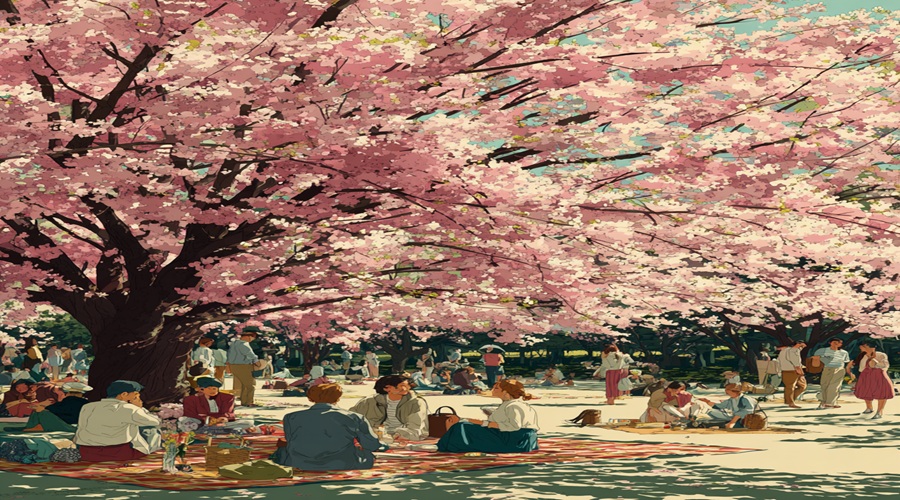
Cherry Blossom Viewing
Japanese Name:
花見
Romaji Name:
hanami
Description
↓↓
Hanami is the traditional Japanese custom of flower viewing, particularly the celebration of cherry blossoms (known as "sakura"), which bloom in the spring. The word "hanami" is derived from "hana", meaning "flower," and "mi", meaning "to look at" or "to see." Thus, hanami literally means "flower viewing," but it specifically refers to the practice of appreciating the beauty of cherry blossoms.
History
↓↓
Hanami is the Japanese tradition of enjoying the beauty of cherry blossoms (sakura) in spring.
Its origins date back over a thousand years to the Nara period (8th century), when aristocrats admired plum and cherry blossoms.
By the Heian period (9th–12th century), hanami became popular among the imperial court, often accompanied by poetry and festivals.
During the Edo period (17th–19th century), it spread to common people, who held outdoor parties under blooming cherry trees.
Cherry trees were planted in public spaces, making hanami a widespread social and cultural event.
Today, hanami remains a cherished tradition in Japan, celebrating nature, beauty, and the arrival of spring.